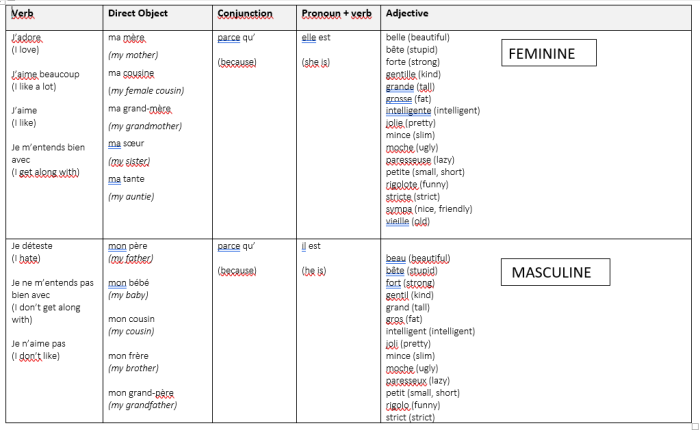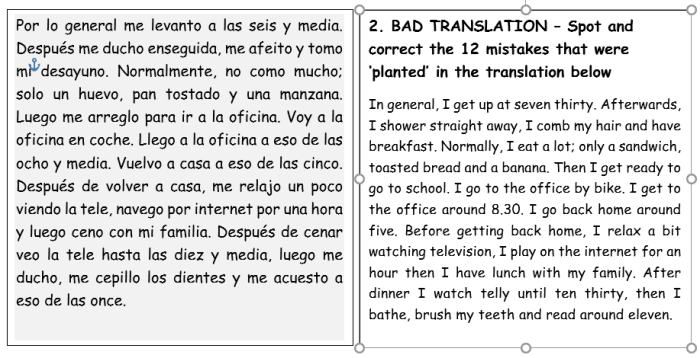(authored with Dylan Vinales )
1.The attributes of effective aural and written input
In my posts I often point out how, in my view, for the input we give our beginner L2 learners in aural and written texts to truly enhance learning, it ought to satisfy the following criteria:
- It has to be comprehensible – i.e. the learners should be able to access 95 % of it without resorting to the use of dictionaries or other resources.
- it has to be highly patterned and repetitive – i.e. the text(s) ought to be ‘flooded’ with as many occurrences as possible of the target phonological, lexical and structural patterns – even, I believe, at the expense of its ‘authenticity’; what applied linguists, e.g. Ellis (2010) call ‘enriched input’ (see here for my rationale for this assertion). Hence the notion, central to my pedagogic approach, that at lower levels of proficiency listening and reading tasks should concern themselves mostly with Controlled input rather than Authentic input
- It ought to have high surrender value – i.e. it should contain high frequency vocabulary and patterns that can be useful across a wide range of contexts – even if the application to other contexts require some morphological or syntactic manipulation.
- It must be learnable – i.e. it should be within the developmental grasp of the learner, e.g. no use asking a young learner to read Milton’s “Paradise Lost” as my English teacher required of me in middle school !
- It ought be engaging and memorable – i.e. its content, patterns and/or sounds stand out by virtue of their distinctiveness, appeal, the cognitive and/or emotional arousal they bring about in the learner, their ‘catchiness’ (in the case of songs or nursery rhymes)
However, as I was brainstorming ideas for a workshop I am going to deliver next week, I realised that I have neglected to write about the most important staple of my pedagogic approach, what I call Thorough Processing .
2.Thorough processing
As I often reiterate, the reading and listening tasks typically found in textbooks and most other published resources usually require students to answer questions on a text that range from ‘who / where / how/etc.’ questions to ‘True or False’ ones. This encourages what I call Partial ( or Focused) processing’, as the students do not process the text in its entirety; rather, they skim and/or scan for key words or other intra- or even extra-textual cues which may help them answer the questions. They may, once identified the portions of the text which contain the needed information, read them more thoroughly; however, unless the questions or tasks on the text are numerous and cover every single sentence in the text, several parts of that text will not be processed deeply enough to impact learning.
Yet, for instructors like myself, who lay a strong emphasis on repeated exposure to the target chunks, lexical patterns and structures in the belief that repeated exposure enhances L2 acquisition, this is an important issue; we would want our students to process the text in its entirety; to pay attention to each and every target item so that (1) they become more aware of the way known items behave in a range of phonological, lexical and structural contexts thereby enhancing their acquisition; (2) notice unknown items thereby beginning their acquisition and, (3) if the text contains material that may enhance their knowledge of the world or their well-being, they benefit from it to the fullest extent rather than gathering ‘bitty’ information.
3.What tasks elicit thorough processing?
The first answers that comes to mind are, obviously, translation and, in the realm of listening, dictation and transcription. No other tasks force a student to pay more attention to individual features of L2 input than these two. However, these tasks can be quite time consuming and many students, especially younger learners, may find them a bit tedious.
In a previous post, here, I have presented a wide range of tasks I devised in order to gamify translation or simply make it more enjoyable (e.g. Oral Ping-pong translation; No snakes no ladders; Narrow translation) and are very popular with students in my school. Please note that although those tasks are described in their L1-to-L2 version, I often use them with much success in the opposite direction, too.
Another technique involving translation and thorough processing from L2 to L1 involves the use of sentence builders. I use this technique, as my regular readers know, to introduce the meaning and model the use of new chunks, patterns and structures whilst recycling old ones. The technique is very simple: I make up sentences using the chunks of language in each column which I read out at moderate pace and ask the students to translate them on their mini whiteboards. As Figure 1 (a SB used with my year 5 French) below shows, my sentence builders are highly structured and contain the L1 translation in brackets. After a few lessons, the L1 translation is partially or completely eliminated.
Figure 1 – SB used with year 5 French students (8-9 years old) to teach family + adjectives

As those who have attended my workshops know all too well – I usually spend about one and half hours on this ! – there are numerous techniques and tasks which can elicit thorough processing, many of which I have described in previous blogs.
One of the most effective and engaging in my repertoire is ‘Bad translation’, a problem-solving task that I have created as a way to exploit Narrow Reading texts but can be used on any text. The task is for the students to spot eight or more mistakes the teacher deliberately made in a translation of a relatively short text to lay emphasis on certain vocabulary or structures. This forces the students to really process the target language texts in great detail and learn vocabulary incidentally as they do so”. Figure 2, below, illustrates an example I have used with an absolute beginner class
Figure 2 – example of ‘Bad translation’ task designed for and used with a Year 7 Spanish class (11 years old Ss)

Other tasks eliciting thorough processing which I have already described elsewhere:
- Spot the differences’ – another task I often stage and have described elsewhere, involves having two very similar texts which contain few differences for the students to spot thereby forcing the reader to more closely and thoroughly process the target text. Please note: the students need to explain what the differences they identified are in the L1 (e.g. text A says ‘X’ whilst text ‘B’ says ‘Y’) to verify whether they are actually processing the text semantically and not simply perceptually.
- ‘Bad summary’ – a text is summarised in the L’1 or L2 but the summary contains a number of mistakes for the student to pick up. This forces the learner to read two texts at the same time if the summary is in the L2 !
- ‘Bad description’ – a picture is described in detail. The student is tasked with spotting the errors in the description of the picture.
- ‘Spot the intruder’ – there are several versions of this. The concept is that you place several extraneous items in a text which the students need to spot. The version I use the most is for perceptual thorough processing: I read a text to my students who are given a version of its transcript containing words which make sense and are grammatical, but are not included in the version I read out to them. Another favourite of mine is a version whereby the extraneous elements consist of vocabulary items that don’t fit at all semantically (e.g. In my room there is a beautiful but stingy table); the students are simply tasked with crossing them out.
- ‘Gapped parallel text’ – this consists of an L1 text with the L2 text alongside from which at least one chunk per sentence – not single words – has been removed. The rationale for this approach is that typical cloze tasks involving one-word gap every five words encourage focused processing, whereas more frequent gaps involving chunks, besides being more challenging, they require the learner to process more attentively what comes before and after each gap.
- Any text reconstruction task with L1 scaffold like the writing puzzle in Figure 3 below. I often stage this technique as a dictogloss task with beginner classes, i.e. the students, working in groups listen to a text being read and reconstruct it with the help of the L1 translation. You can find hundreds of such tasks on http://www.textivate.com, a website which also allows to create your own.
Figure 3 – Text reconstruction task with L1 scaffold designed for and used with a year 8 French class (12 years old Ss)

Concluding remarks – A pivotal mindshift
Adopting a thorough-processing approach implies an important mindshift from the traditional CA (comprehension – answer) approach to reading and listening instruction to a modelling approach which purports to encourage noticing, high exposure to the core L2 chunks, patterns and structures and, ultimately, actually learning from the texts one reads and listens to .
A teacher who truly wants their students to learn from the listening and reading tasks they set them, will ensure that thorough receptive processing is a regular occurrence in their every lesson. Focused processing tasks requiring students to answer a set of closed questions do have their place in reading and listening instruction, too, of course, as skimming and scanning, inferencing and educated guessing are important strategies, too. We need, as teachers, however, to bear in mind that the primary purposes of reading and listening should be (1) to model and consolidate language; (2) academic learning; (3) entertainment and (4) personal enrichment. Not to quiz.
The regular use of reading and listening tasks involving the thorough processing of narrow reading texts containing controlled, repetitive and highly patterned comprehensible input has yielded impressive results with my beginner to intermediate classes. I haven’t tried it with higher-proficiency students but I assume the outcomes would be as beneficial for the above discussed reasons.

Hi Gianfranco and Dylan,
Just to let you know that we’ve shortlisted this blog post for this month’s TeachingEnglish blog award and I’ll be putting up a post about it on tomorrow’s TeachingEnglish Facebook page http://www.facebook.com/TeachingEnglish.BritishCouncil, if you’d like to check there for comments.
Best,
Ann
LikeLiked by 1 person
Thank you Ann 🙂
LikeLike